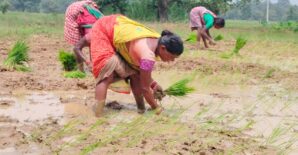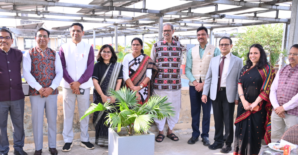The second annual World Food Safety Day (June 7)—with the theme “food safety, everyone’s business”—promotes global awareness and action on this key issue. Given its large and diverse population and present level of economic development, India can reap significant public health and economic benefits from a sustained effort to combat the problem of unsafe food.
Though evidence on the extent and burden of foodborne diseases (FBDs) in low income countries is still limited, the World Health Organization (WHO) estimates that the global burden of FBDs is comparable to that of malaria, HIV/AIDS, or tuberculosis. Low and middle income countries account for 98% of the global FBD burden; Africa has the highest per capita burden and Asia has the highest total burden.
In India, food systems are changing rapidly in ways that offer new avenues for FBDs. The consumption of animal sourced foods, which are high in nutrients but also carry disease risks, is rising. There is a culture of eating out, with street food vendors proliferating, yet little in the way of effective food safety regulation.
Amid its many challenges, the COVID-19 pandemic offers a fortuitous opportunity to strengthen India’s food safety systems. These two issues intersect in several ways. COVID-19 comorbidities include non-communicable diseases (NCDs) such as diabetes that are associated with poor diets; there is a heightened level of public and policy concern over health and food safety; and the government’s pandemic recovery package includes policy changes in agriculture and agri-markets that could lead to considerable capacity expansion for managing food safety.
The message from the Food Safety and Standards Authority of India (FSSAI) on COVID-19 sums up the policy discourse thusly: “While FSSAI’s mandate is to ensure safe and wholesome food for the country, the importance of food safety and hygiene has never been more as we navigate through these unprecedented times.” During the crisis, FSSAI has authority over import clearance of food items and food testing laboratories (including the organization’s two National Food Labs) that are classified as essential services.
India has long lacked regulatory capacity (in terms of capital and institutions) in addressing food safety concerns. But COVID-19 has, for the moment, broadly changed consumer perceptions about food safety. Though the novel coronavirus is typically transmitted via airborne respiratory droplets, and the risk of contracting it through contaminated food is considered low, people in India (and around the world) are demonstrably more concerned about disease risk from food. This new awareness and demand for better food hygiene can put pressure on value chain participants to deliver on food safety.
The crisis and resulting containment measures have hit the Indian economy hard, with most analysts predicting its economy will contract by 5% in the fiscal year 2020-21. In response, the government announced a $300 billion recovery package, including an agriculture package with a mix of fiscal stimulus and policy reforms and, each offering potential ways to improve food safety.
- Creating commodity-based clusters and formalizing small and micro food enterprises, with the aim of targeting global markets.
- Provisions for direct sales by farmers.
- Marketing innovations, including promoting e-commerce,
- Investment in infrastructure at the farmgate as and the Farmer Producer Organization level.
In India, as in most low-income countries, food that poses health risks is sold in informal (traditional or wet) markets. There are nearly 50 million such food enterprises, according to the latest nationally representative enterprise survey for India, and they are the part of the food system most adversely affected by COVID-19—and where management of food safety is the most difficult. Nearly 150 million people depend on these food enterprises, i.e. more than 120 million farmers. Any formalization of food-based enterprises will need to address how the sector will guarantee food safety.
Formal trade rules, meanwhile, require enforcement of established food safety standards, so promoting greater trade integration will require a stronger health and safety focus. Note that food safety affects both the intensive as well as the extensive margins in domestic or international trade. Unless there is capacity for providing the market-desired levels of safety, trade will not occur at all. Producers will choose local informal markets if they find formal food safety requirements too onerous. Thus food safety has implications for trade and vice versa. In the post-COVID era, the public may be concerned that food trade itself is introducing hazards. Another focus will be how much trade contributes to overweight and obesity, with the consumption of bad calories leading to NCDs.
India has the dubious distinction of receiving the highest number of food safety and quality food import rejections in both the United States and European markets. But there are solutions. The online portal Grapenet, where all grape farmers are registered, updates market safety rules (such as maximum residue limits of different chemicals) in real time, and has helped to turn the corner in India’s grape exports. This approach can be replicated for other commodities, such as pomegranates. Complying with export standards could itself have spillover benefits in India’s domestic markets. IFPRI research has shown that there has been significant uptake of internationally certified grapes in domestic markets in metropolitan and second-tier cities in India.
Moving forward into the recovery period, while a subset of micro and small food enterprises will receive direct aid, it is the informal sector that will continue to be the most important source of fresh food in India.
If implemented properly, the government’s recovery measures offer brighter prospects for food safety in India—one that promises to draw in the private sector. We are at a moment in the history of India’s food system when improving food safety looks like an extremely attractive investment proposition.
Nevertheless, the challenges are significant. India’s food safety problems are huge and the supply of skills and resources to address them is scarce. What the COVID-19 crisis has done is begun focus the attention of authorities on the big food safety and health issues. This includes opportunities to better communicate food safety risks and ways to reduce them—both to the general public and to the private food sector—a role that FSSAI is trying to undertake as part of its COVID-19 response.
For the recovery package, the main challenges will be closing the policy-implementation gap and making food safety and hygienic practices the new normal from farm to fork. The COVID-19 response has the potential to change India’s food safety culture among all stakeholders—including policy makers, the agri-food sector, regulators, and consumers. But such changes will happen only if there is well-informed demand for better, safer foods. Encouraging such demand will depend, in part, on future research on the costs of food safety, performance assessments, and risk communication.
By Devesh Roy, Senior Research Fellow, CGIAR Research Program on Agriculture for Nutrition and Health (A4NH)




